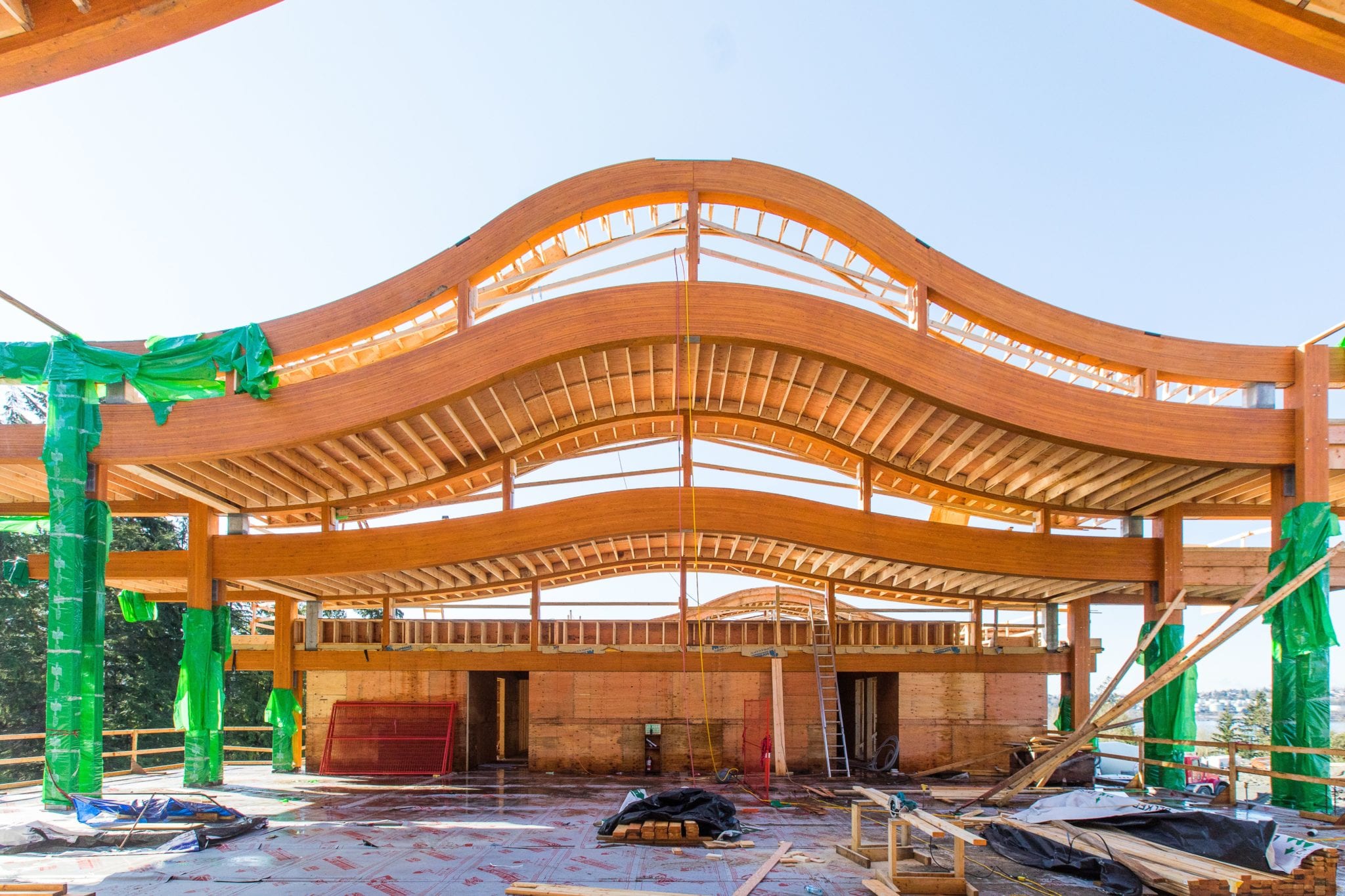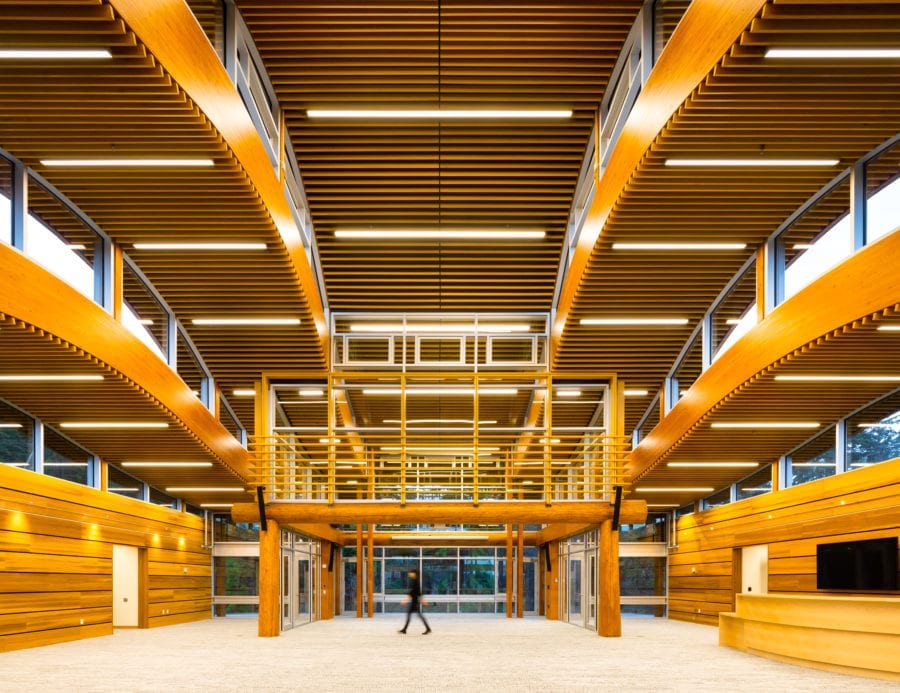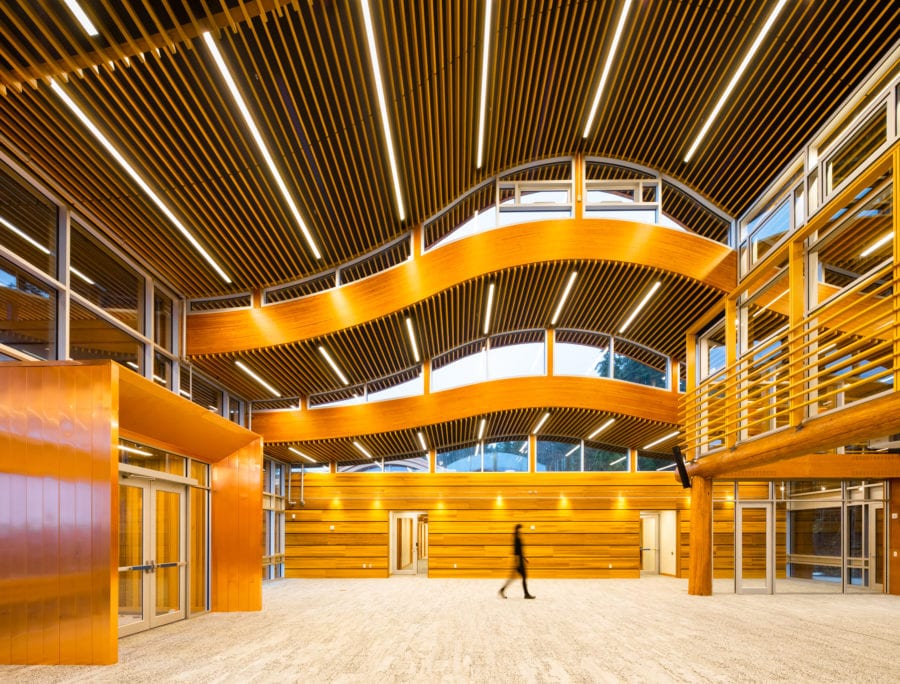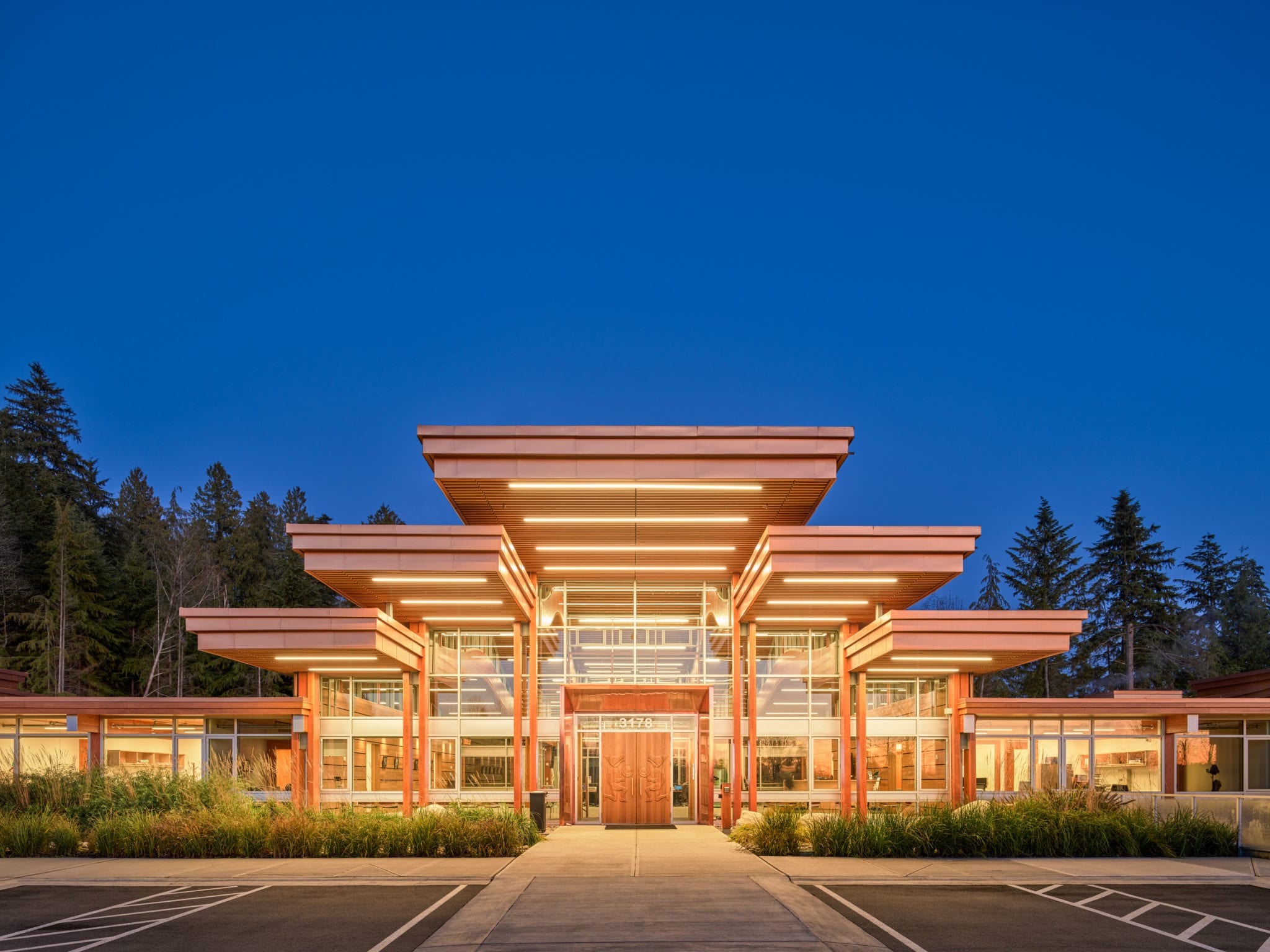The Tsleil-Waututh Administration and Health Centre located in North Vancouver, BC is a two-storey mass timber structure, with a unique stepped wavy roof. The client wished to build a structure that would become a hub for the community that not only met their functional needs, but that was also an expression of the Tsleil-Waututh First Nation.
Project Essentials
- LocationNorth Vancouver, BC
- ArchitectLubor Trubka Associates Architects
- ClientTsleil-Waututh First Nation
- Size31,000 ft² (2,880 m²)



